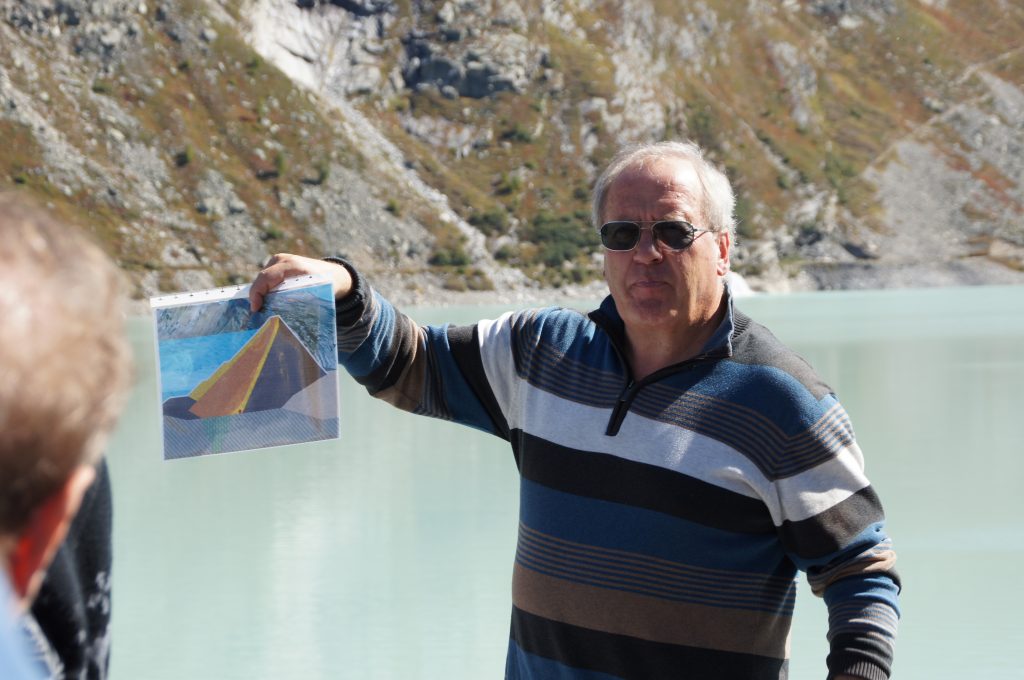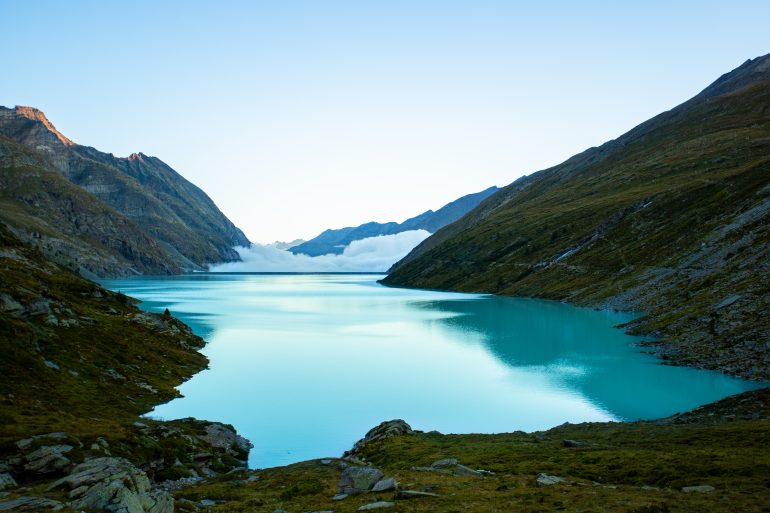The Power of Nature
The history of the Mattmark
A person who has never visited the Mattmark and perhaps hasn’t even heard of it might well ask themselves what makes this place so special? That’s what I thought too when I heard about this place for the first time. For many people in the Saas Valley, the Mattmark is a true powerhouse, a place where you can think about something else, switch off and enjoy nature or escape from the stress of day-to-day life. But it is also a place that brings back painful memories.
I experienced this the first time I visited the Mattmark in August 2021. At the site itself, I was able to directly experience the power of the reservoir, and how breathtaking the image of the sun reflected in the turquoise water looked.

In order to do this blog post about the Mattmark justice, I enlisted the help of Rolf Zurbriggen. His father, Adolf Zurbriggen, worked at the Mattmark power plant as a dam warden for 31 years, where he led tours of the facility. This meant that Rolf had plenty of opportunities to get to know this unique construction. In order to gain a better understanding of everything, we need to turn back time, as our history of this impressive place starts back in the 17th century.
Early history
Mattmark was a 1.5 km² plain lying approx. 5 km below the Monte Moro pass. The Distel Alp was located to the rear. It was the largest alpine pasture in Saas and every community had an alpine hut there. In summer, more than 100 cows, sheep and goats grazed on the pasture. The lower end of the plain was closed off by a large glacial moraine. The Allalin glacier extended to the bottom of the valley and, as a natural dam, blocked the course of the Vispe, forming a so-called glacial lake. Again and again the lake broke its banks, causing serious devastation in the Saas Valley. There are 25 outbreaks documented in Saas historical records. The Mattmark flash flood, which occurred on 4 August 1633, hit the population of the Saas Valley hard. Almost half the people living there lost all of their worldly goods and they were forced to migrate.
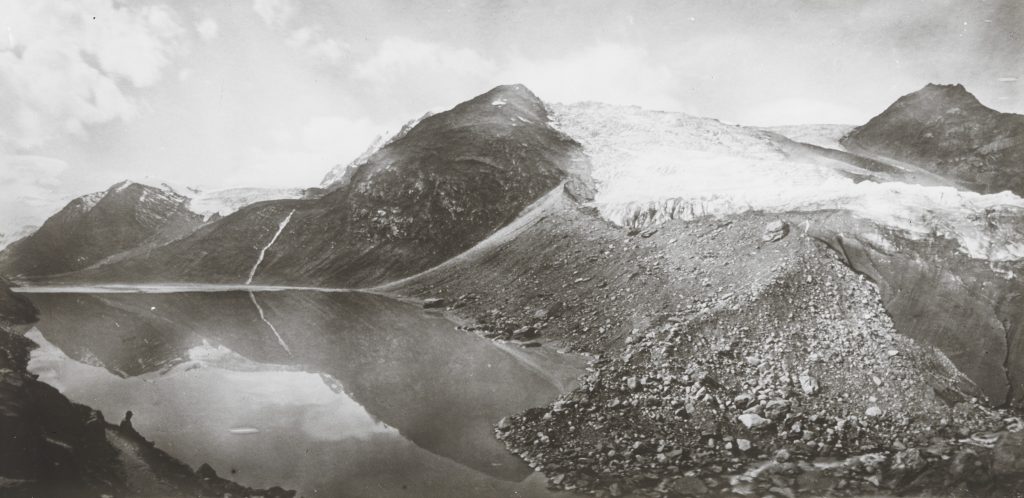
In 1856, the parish priest of Saas had a hotel built, close to the blue rock. This was very important as a starting point for various mountain tours and also as a rest stop for people who wanted to travel from Saas-Almagell to Italy. In the summer months, the area also had plenty of visitors, thanks to the diversity of flora and fauna. From 1870 to 1895, smuggling was at its peak. Many of the men from the Saas Valley were working in the gold mines in Magugnaga. The Saas people and their Italian friends therefore knew each other very well and so selling coffee, cigarettes and saccharine in Italy was easy. These cross-border commuters mainly brought copper kettles for cooking, rice and other foodstuffs back home. Wedding rings were also much cheaper in Italy.
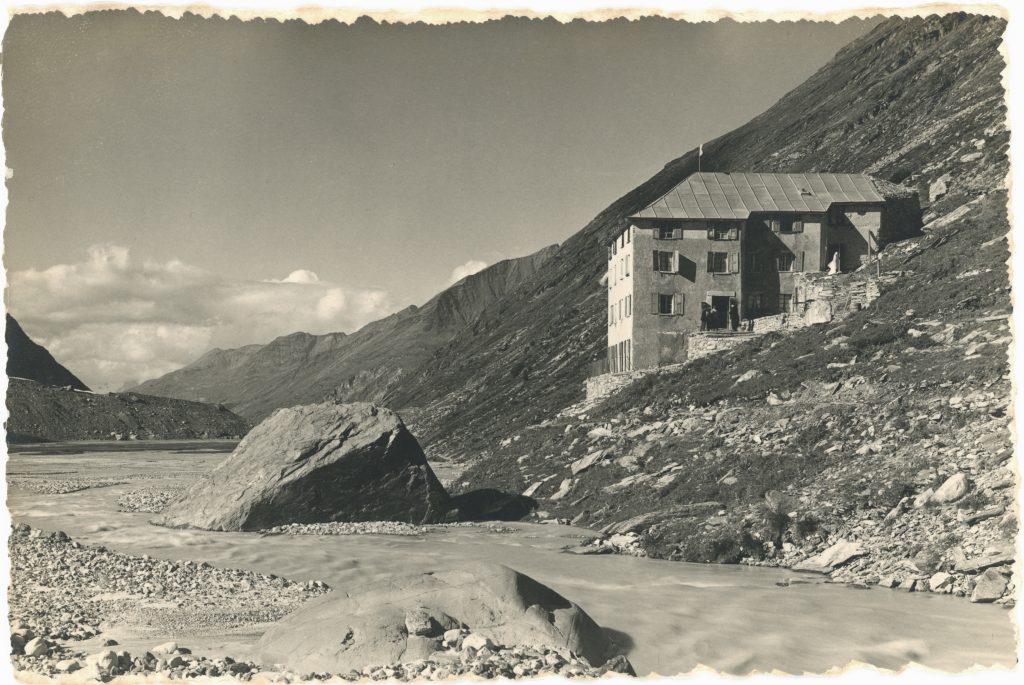
Postcard Photographer: Gyger, Emanuel.
The beginnings, from the construction of the dam onwards
By 1920, engineers were in the process of investigating whether or not the Mattmark plain would be a suitable location for a dam to generate electricity. At the beginning of the 1950s, Elektrowatt in Zurich was interested in the site and in 1954 they proposed a pre-project. Elektrowatt was granted water use rights by 11 municipalities.
In 1959, the Mattmark AG power plant was established on the site of the Hotel Beau-Site in Saas-Fee. In order to facilitate starting work on the dam, a six metre-wide road from Saas-Almagell to the dam was built between 1958 and 1959. Prior to the construction of the dam, an injection screen was installed to seal the subsoil. The boreholes went right into the rock and they were filled with liquid concrete. A drainage gallery was built on top of it; through this gallery the workers could carry out their inspection rounds from the butterfly valve to the measuring chamber below the dam at any time.
From 1960 to 1967, over a width of 373 m and a length of 780 m, the filtered moraine material from the southern and northern moraines of the Allalin glacier was piled up. This created the largest earth dam in Europe, with a height of 120 m and a volume of 10.5 million cubic metres. At the same time, the tributary tunnels were constructed. Thus, the water from the Allalin and Hohlaub glaciers was channelled down on the left side of the valley, and on the right side, the water from the Furgg, Almageller and Trift streams was fed into the reservoir.
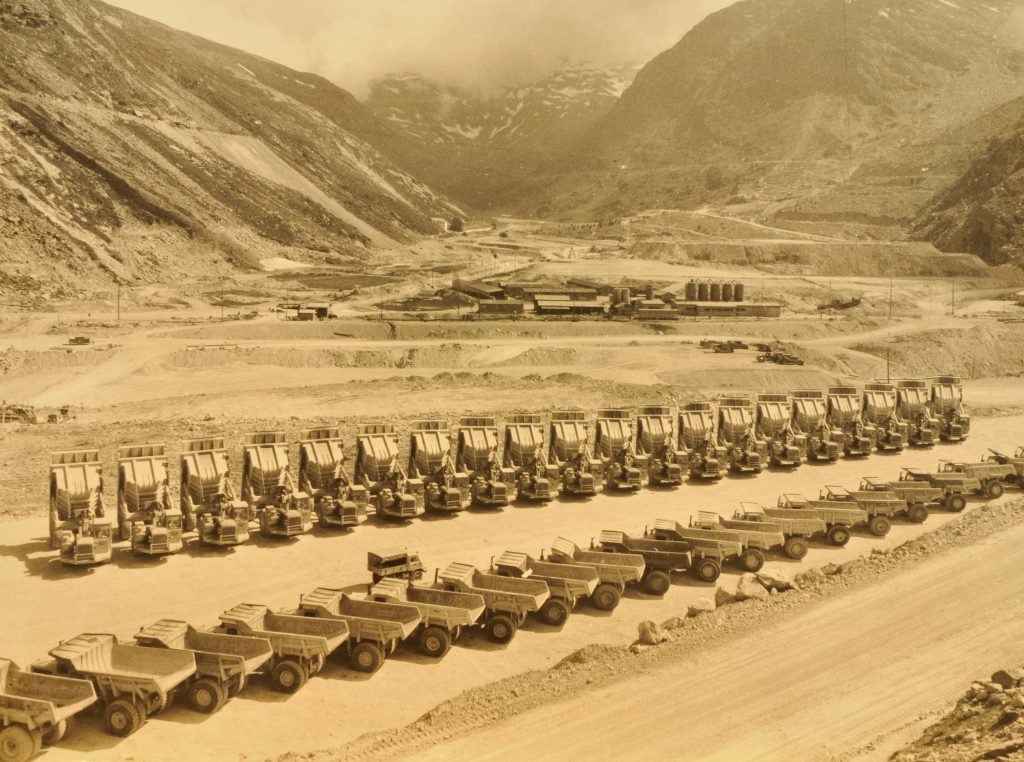
In 1961, the settlement of Zermeiggern, which had 20 houses, stables and a small chapel, was demolished. It had to make way for the equalising reservoir. On the right-hand side in Zermeiggern, 6 large canteens were constructed for the workers, to provide accommodation and catering. In the summertime, up to 1300 people worked on the power plant construction sites. Everything went according to plan until 1965.
The glacial ice avalanche and the years that followed
On 30 August 1965 at 5:10 pm, a terrible natural catastrophe took place. On that fateful day, 1 million m² of ice broke off the Allalin glacier and engulfed the construction site, including various barracks at Mattmark. A total of 88 workers, including 56 guest workers from Italy, were buried by the huge ice avalanche and lost their lives. The accident came as a great shock to the Saas population, Switzerland as a whole and Italy too. The names of the victims were engraved on a stone slab in the new chapel in Zermeiggern.
One year later, work to finish the dam had begun and it was completed in 1967. The inauguration and full operation of the plant took place in 1969. Since then, the reservoir has been operated as a storage power plant, which means that the reservoir is empty in May and full in mid-September. The two power plants produce 680 million kWh of energy between them. The plants mainly generate peak energy for the winter. Between 1983 and 1987, the company set up a pumping station in Zermeiggern to pump the water from the equalising basin back into the dam lake. Approximately 10 million m³ of water is pumped up per year.
On 24 September 1993, the Upper Valais was hit by a heavy storm. Brig was flooded. The Saas Valley and Visp were spared, thanks to the Lake Mattmark reservoir. It was possible to divert all the side streams back to the Mattmark reservoir and then later allow them to flow through the middle outlet. In October 2000, a similar situation occurred once again. Based on these insights, the canton converted the dam into a multipurpose reservoir in 2001. Ever since then, the canton of Valais has had a retention volume of 2.6 million m³ at its disposal.
In 2007, the reservoir was emptied in order to renew all safety installations such as the butterfly valves, the gates at the bottom outlet and also at the middle outlet after 50 years of operation. The residual water was discharged into the Vispe River via the bottom outlet in April. The power plant operator instructed the Cantonal Fishers’ Association to reintroduce rainbow and brown trout into the lake and Vispe River.
Mattmark today
In 2008, a new restaurant was built on the dam crest. The first floor houses the offices of Kraftwerke Mattmark AG and an exhibition space where people can watch a film about the origins of the dam at any time.
Today, not only does the dam supply electricity, it is also a wonderful place to go hiking. Visitors can do a short circular walk around the dam reservoir. At the back of the reservoir is the new Distel Alp hut. You can admire the black Eringer cows on all of the alps. You can do a longer walk by following the high alpine hike, which starts at the Felskinn cableway in Saas-Fee and leads over the Allalin and Hohlaub glaciers down to the Mattmark. You can hike on old smuggler routes from Mattmark to the Monte-Moro pass and enjoy the view of the Monte Rosa east face when visiting the Golden Maria. If you prefer travelling on two wheels, you can also ride around the reservoir lake on a mountain bike. When hiking around the lake, you might also come across the sought-after therapeutic plant, the medicinal rose root. It has a calming effect to counteract stress. As the plant is protected, it is bred by the Agroscope research institute.
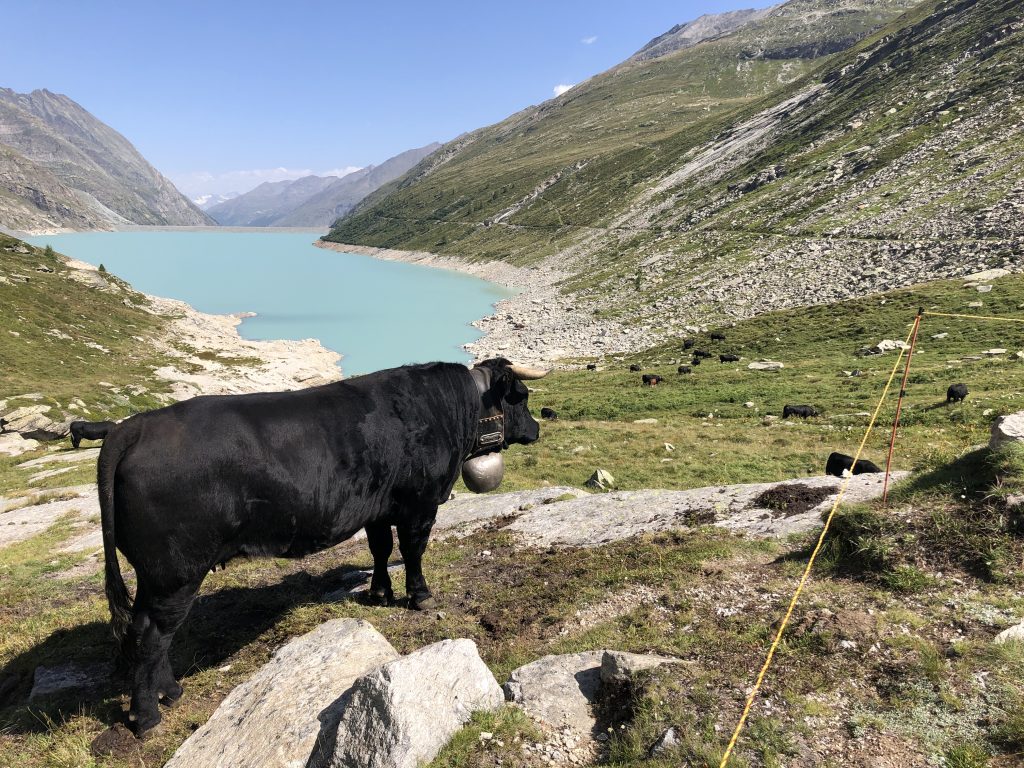
If you want to get an idea of the history of Mattmark, I recommend the postcard exhibition by Thomas Burgener, who has been collecting written postcards for 40 years. From December 2021 to October 2022, Thomas will be exhibiting part of his extensive collection of postcards in Haus Alma opposite the Saas Museum in Saas-Fee. Around 250 original postcards from the Saas Valley from 1890 to the present day are on display on 10 panels. The exhibition shows the history of the picture postcard, including postcards from the Mattmark area.
In memory of the workers who died in the accident, the Mattmark Memorial half marathon has been organised since 2019. This is considered a challenging route, as there are 810 metres of altitude to conquer. The route starts at the round church in Saas-Balen. It then leads through picturesque larch forests past Saas-Grund and Saas-Almagell to Eienalpe. Taking historic paths, you then reach a pleasant climb to reach the dam wall. After this point comes the most pleasant section for the runners, consisting of 7 kilometres of a practically flat route around the picturesque Mattmark lake.
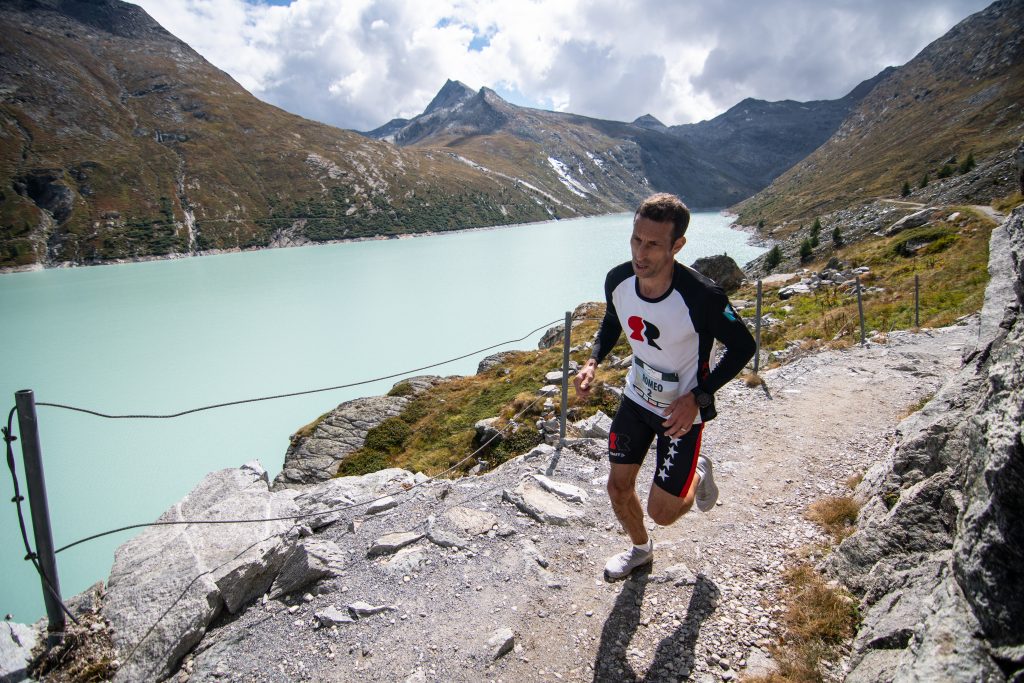
This is the animating story that motivated Rolf Zurbriggen to tell the Saas Valley’s visitors about what Mattmark was like in days gone by and how the wonderful dam came into being. This event is organised by Saastal Tourismus.
More information:
- Date & time: Every Tuesday | 2:00 pm
- Meeting point: By the information board in front of Restaurant Mattmark
- Price (incl. aperitif): CHF 12.00 | CHF 10.00 with the SaastalCard
- Note: German | From 5 people
- Registration: until the previous evening at 6:00 pm | Service Center Saas-Almagell + 41 27 958 18 88 | info@saas-almagell.ch
